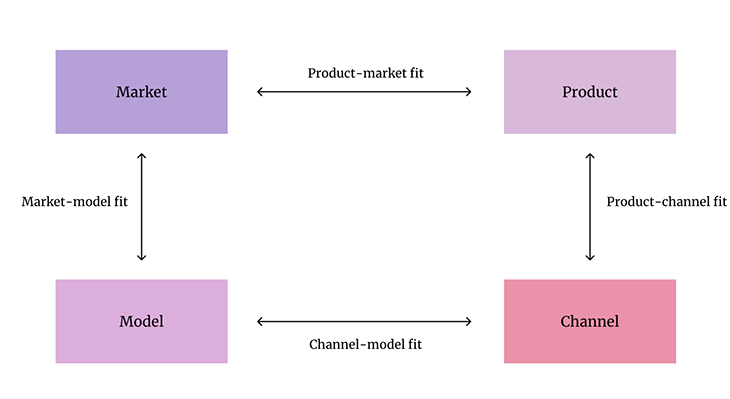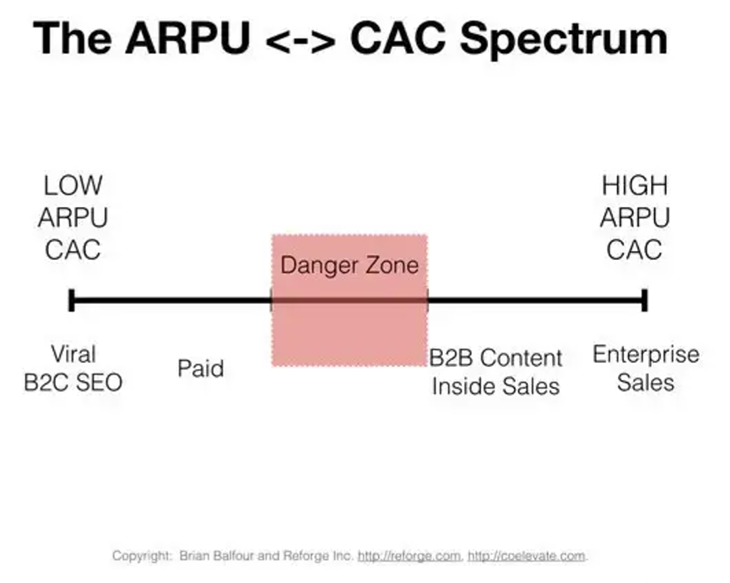Everyone is talking about product-market fit (PMF) as if it’s a silver bullet to building successful products. It’s not.
Don’t get me wrong, building the right solution for the right audience is imperative for product success. But it’s barely enough.
There’s much more to it.
Table of contents
The problem with focusing only on product-market fit
The problem with focusing only on product-market fit is that we often neglect other critical aspects of product development.
Unless you are an NGO serving one user, focusing only on PMF can lead to two major problems.
Problems with distribution
Even if your product solves truly relevant user problems, you first need to reach out to your users.
After all, no matter how great your solution is, it’s useless if no one knows it exists.
The painful truth is there are some great products that failed miserably, as well as relatively poor products that achieved a grand scale.
The difference? Distribution.
Problems with generating revenue
Having product-market fit doesn’t guarantee your prospects will actually pay for the product as much as you expect.
In the worst case, without a properly aligned monetization strategy, you’ll quickly end up under the water. And even if you don’t, you’ll leave a lot of money on the table.
At the end of the day, you need to generate revenue to fuel further innovation.
Solution: A 4-fit framework
You can avoid these problems by looking at the bigger picture. Successful products require more than one fit. It needs:

Truly great products nail all these four fits.
Product-market fit
Product-market fit answers the question if the product actually solves users’ problems. You achieve the PMF by having at least one:
- Important, unmet problem
- A minimum viable solution to the problem
This is the first fit you should pursue. Although the product-market fit is not enough to build a great product, you won’t have any product without that.
Consequences of lack of product-market fit
If your product doesn’t solve a significant problem many people care about, it simply won’t stick. Choosing the perfect market, using the most optimal growth engine, and having a sound monetization strategy are no good if your product doesn’t provide any actual value for your users.
Product-channel fit
Product-channel fit answers the question of whether your product is built in a way to maximize the potential of your growth channel.
There are various ways to grow a product and attract new users. These include:
- Sales
- Virality
- SEO
- Performance marketing
- Partnerships
However, each growth channel has specific rules, and the product you build must fit the channel’s rules.
For example, if your strategy is to acquire users through SEO, your product must be built to enhance SEO. Among others, you must generate content at scale, either via:
- Blog
- User-generated content
- Automatically generated pages
In the same manner, if you want your product to go viral, you need to incentivize it first — your product must be better when used with friends, or users should have other incentives (like bonus points) to invite others.
You need to clearly plan how you will acquire users and build the product in a way that’s aligned with it. If you over-optimize for product-market fit alone and just throw the product out there, you’ll have a problem attracting users.
Consequences of lack of product-channel fit
You could have a great product-market fit, a sound monetization strategy, and a big enough market willing to pay for your product, but if you can’t effectively reach out to your users, they’ll never know it exists.
As a result, you won’t be able to capture revenue to fuel further growth and user acquisition. You’ll end up with a well-oiled engine with no fuel.
Channel-model fit
Channel-model fit answers if your expected average revenue per user (ARPU) can cover your customer acquisition costs (CAC).
ARPU comes from your pricing and the number of users you can convert to paying users. CAC comes from the cost of the growth channel you have chosen (for example, ads are cheaper than direct sales).
If you estimate to earn, on average, $10 per user you get, then using a growth engine with a CAC of around $200 is a no-go in the long run.

If the type of product you build has a naturally low ARPU, you should choose a channel with a relatively low CAC to not lose money (thus, also you need to adjust your product to use that channel effectively). On the other hand, if you get relatively high revenue per user, then you could try using more expensive growth channels to put as many users through the funnel as possible.
Consequences of lack of channel-model fit
If you have a perfect product-market fit, an efficient growth channel, and a market big and rich enough to fill your revenue goals, you’ll grow.
But if ARPU is higher than your CAC, then you’ll lose money doing so. At the early stage, it might be okay, especially if you have external funding. But in the long run, you need to be revenue positive.
On the other hand, if your CAC is way lower than your ARPU, there’s a high chance you are leaving growth and money on the table by not choosing the most efficient growth channel you can afford.
Model-market fit
Model-market fit answers if your monetization model (how you charge and how much you charge) is aligned with your target market. You achieve the fit if there are enough users willing to pay the price you ask for to generate your desired revenue goal.
Say that you want to achieve $1 million of revenue yearly in a given market. If your ARPU is $10, then you need to acquire 100,000 users.
If the whole market has less than 100,000 users, you don’t have a model-market fit. You just can’t possibly fulfill your revenue goals in that situation.
In such a situation, you could try to:
- Increase the ARPU: do additional research and improve the product so that you can charge a higher price or convert more users to paying users
- Broaden the market: adjust the product and strategy to enter a broader, bigger market
Depending on your product, your goal might be to charge 100,000 users $10 a year or 10 users $100,000 a year. Regardless of your exact model, what you need is:
- A market that is big enough to meet your revenue goal
- Customers’ willingness to pay that fits your model
Consequences of lack of model-market fit
If you have a solid product-market fit while effectively using a growth channel you can afford, you already have a successful product.
But you won’t be able to scale it without model-market fit. If your market doesn’t allow you to hit your revenue goals (either by being too small or unwilling to pay the price), you’ll reach the ceiling quickly.
Wrap-up
There’s a common misconception that the main objective when building new products is to achieve product-market fit. Just as if finding it was a guarantee of success and years of fame.
While the product-market fit is indeed essential, it’s just the first step.
You also need product-channel fit to acquire new users effectively. Without optimizing channel-model fit, you’ll lose money, one way or another, and lack of model-market fit won’t allow you to scale the product.
It takes time, experimentation, and a few pivots to truly understand these fits, yet, they are never perfect. Slightly changing one part of the equation greatly impacts all remaining fits.
But in the end, that’s what building products and product management it’s all about. It’s about bringing (product-channel) solutions (product-market) that generate business value (channel-model) at a scale (model-market).
Don’t over-optimize one fit. Always look at the bigger picture.
Featured image source: IconScout
The post Why product-market fit is not enough: 4-fits framework appeared first on LogRocket Blog.
from LogRocket Blog https://ift.tt/z61QnZx
Gain $200 in a week
via Read more



